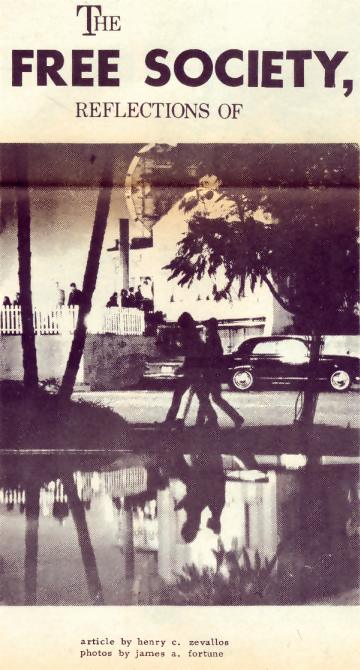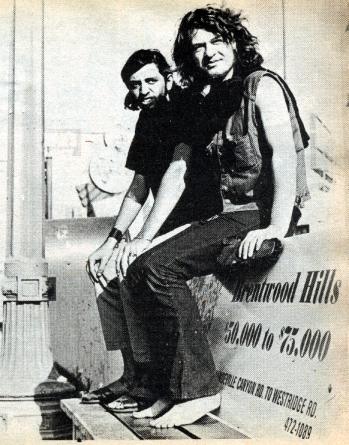|

If
a young man had long hair and dressed rebelliously last summer,
chances were he referred to himself simply as a "long
hair." Chances were even greater that he was a
"beatnik" to his elders. This summer, just about
everyone is in agreement that such a youth is a
"hippie."
There
is, of course, the exception of media such as U.S. News
& World Report, which in a July 17 story told the
reader that the term "beatnik" was out-dated but
proceeded to call today's longhaired liberals by this name
throughout the article. Anyways, that magazine did say something
about being "always considered a few years behind the
times."
All
this reflects two reasons why there exists such a wide
communication gap between the established social community and the
so-called "hippie" tribes.
First
off, the tags are becoming too overpowering in their form of
general identification. If a long-haired high school sophomore
breaks a window on the Sunset Strip, word of hippie vandalism
spreads and a long-haired artist, who is older and takes his
beliefs and protest more seriously, suffers.
Secondly,
there is the gap of being "a few years behind the
times." Too many adults are taking a critical look at today's
youth with over-played remarks of "When I way young,
blabbablab." What they fail to realize is that the times of
their youth no longer exist. Pressures, compounded by an avalanche
of ideas and knowledge, have greatly intensified. The whole world
has become a throbbing hotbed of revolutions; politically,
socially, industrially, scientifically and spiritually.
This
gap of understanding is bouncing American society from one
blackeye to another; Berkley, the Sunset Strip, Century Plaza and
tomorrow.
In
the meantime, the long hair, who stars in this modern American
Revolution, continues to sprinkle himeslf across the nation. He is
photographed, written about, placed before live TV audiences ...he
is both fancied and stoned (no pun intended), but he is seldom
really listened to.
What
makes a youth leave a well-to-do family, college, jobs and the
established norm of life altogether? And what becomes of such a
person?
Realistically,
the answers and possibilities are as varied as the individuals
involved. But a good deal of insight does come when one focuses
in on the following persons.
 DARRYL
AND JEFF DARRYL
AND JEFF
In
early August, 1966, 12 long-haired youths left Chicago for
California. Behind them, they left 18 others who would follow once
additional transportation had been obtained. Of the 12 who led the
migration west, three of them came onto the dirt lawn of Pandora's
Box one night in mid-month.
Pandora's
Box, which islanded at Sunset and Crescent Heights Boulevards,
was then smoldering over a long list of complaints charging police
with unjust treatment of long-haired youths. In a matter of
months, on the night of Nov. 12, 1966, the Sunset Strip
demonstrations were to begin here. The nightclub would soon be
ordered closed and. months later, on Aug. 3 it would be demolished
to make way for a $700,000 traffic realignment.
The
three long hairs who came to this 20th century Alamo over a year
ago were Darryl Jacobs, 22, Jeff Byron, 20, and Ion Bishop, also
20. Dressed rather crudely, they had some money in their pockets.
But it would have been of no significance had they been broke.
Money was one thing they had little need for.
"You
might say," ventured Darryl, "that we're skid row people
with class and intelligence."
"Our
people," added Jeff, "are more like brothers; we share.
If we go to New York, there are people there that help us out. We
in turn give them names and addresses in Chicago or where ever
else we've been."
|

